Kansas City-based artist Marcus Cain was not able to join us for the closing reception of Pattern, Form and Figure, so we thought we’d bring you the next best thing – a studio visit/Q & A. Enjoy his thoughtful answers and insights!

Your patterning and palette fits into a contemporary dialogue, but you get the sense that your work may have influences outside the mainstream art world. Can you elaborate on your work’s influences? What are some of the sources that you draw from for inspiration?
Although I do spend time looking at contemporary art and studying artwork throughout art history, I also like to remain open to the potential for any object or experience to become an influence upon my work.
One important touchstone has been quilting and rug making (I come from a family of quilters and generations of family members who made what they needed out of necessity and pure enjoyment, so I wish to honor those traditions.) I also spend a lot of time looking at other hand-crafts such as folk art, textiles, weaving, whittling, hand-painted signs, graffiti, children’s art, souvenirs, functional craft, and other similar sources.
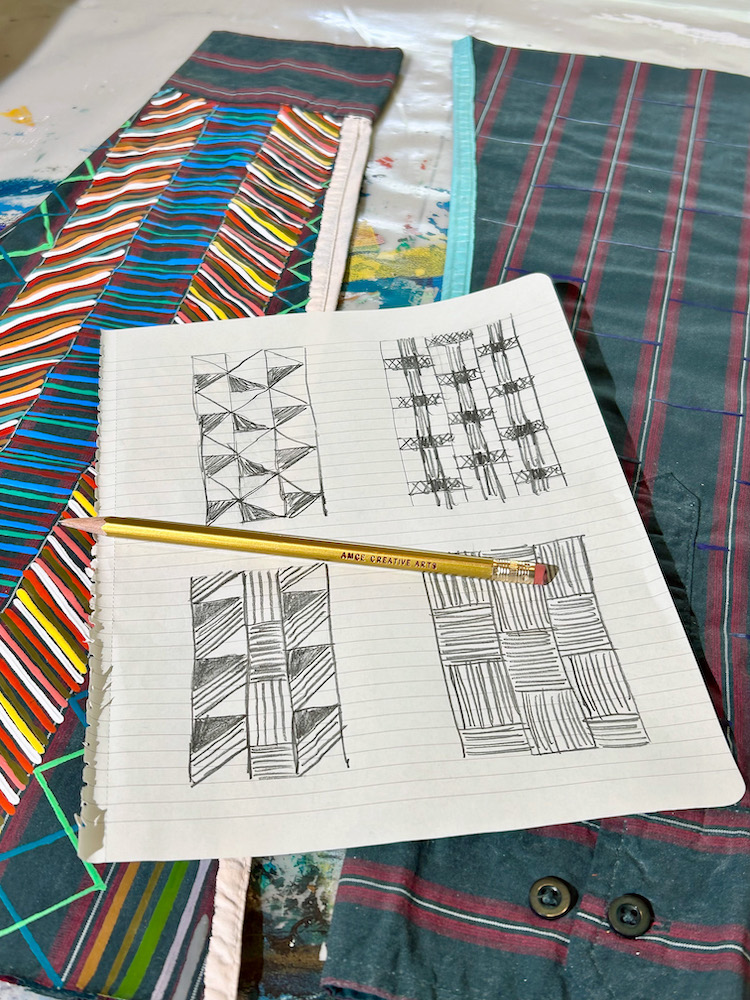
When painting on patterned objects, how much of your design originates from the underlying pattern? Or do you see that original pattern as a blank canvas?
Whether I am working on printed fabric or blank canvas, I often start by briefly sketching out some potential pattern structures on a separate piece of paper. I then begin the work by dividing up the surface using a series of linear delineations that serve as a type of scaffolding onto which the painting will eventually be built.
The difference with the printed fabric is that I begin with more visual information, so the drawing and subsequent painted patterns respond to the existing patterns, colors, and overall shape of the fabric. My patterns are then grafted into any existing textile patterns, working both with and against them, and sometimes covering them so that a completely new configuration may emerge.
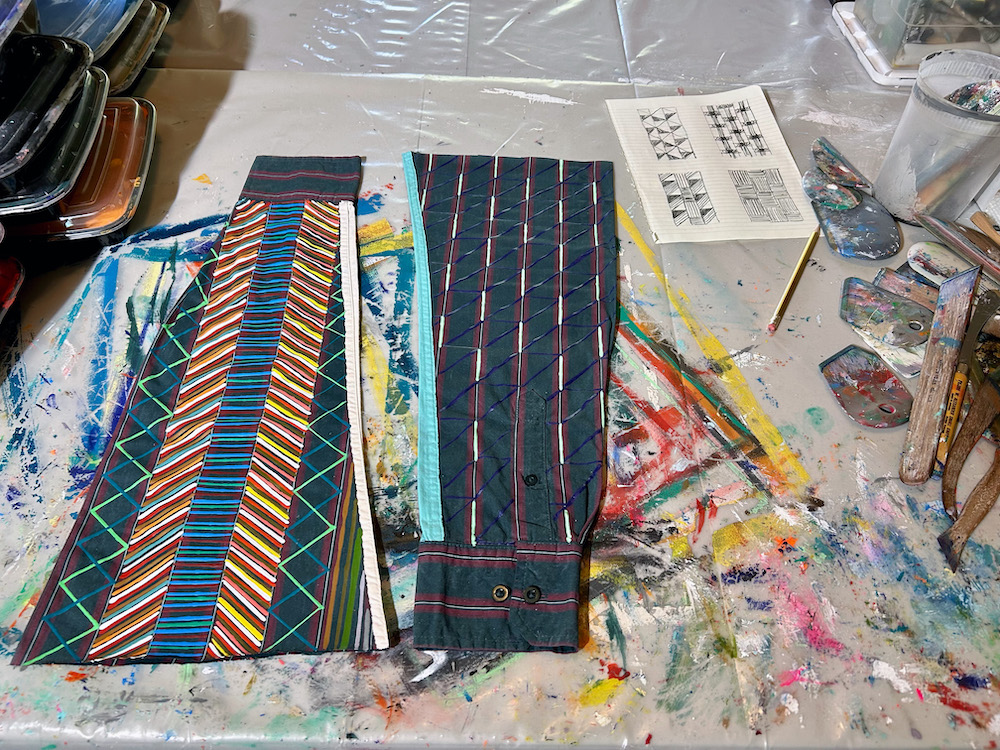
Do you preplan your patterning and color schemes or are you creating them in the moment? What is your starting point?
My patterns are often variations on combinations of preplanned designs and subsequent improvisations based on what I feel is needed to resolve the composition, while my palette is mostly composed of colors that are symbolic and/or based on color memories. I deploy these colors in a linear manner so that the drawing (line) and painting (color) are fused and develop simultaneously and alternately throughout production of the work.
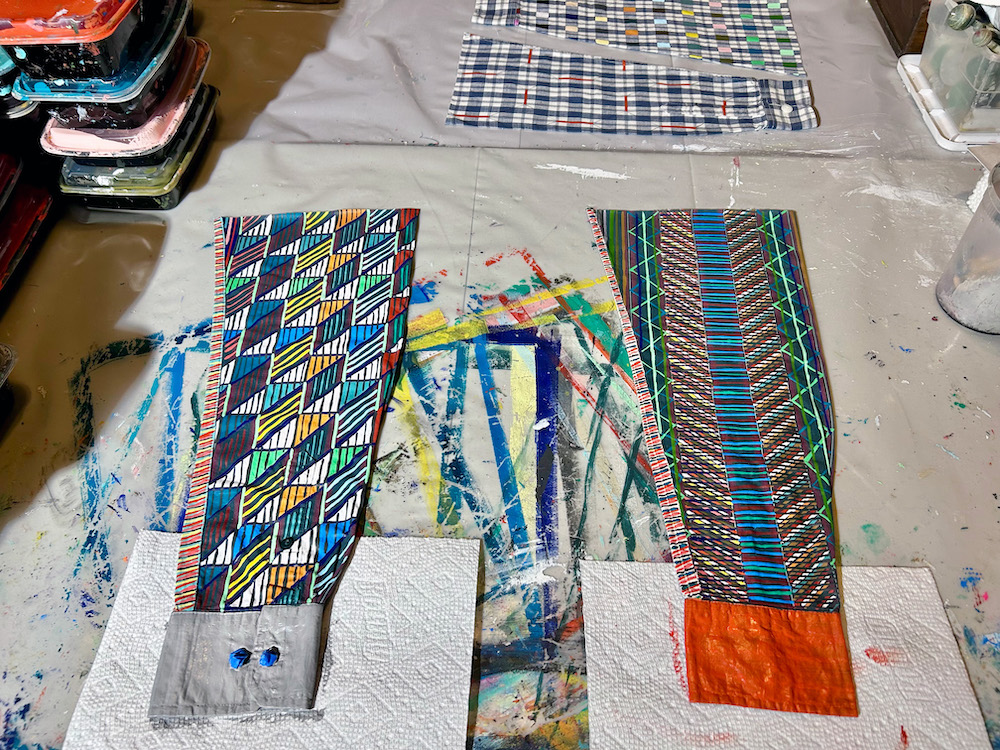
What do you enjoy about painting on nontraditional surfaces, such as the men’s dress shirt sleeves?
I enjoy the challenge of moving beyond the more familiar, standard proportions of a square or rectangle stretched canvas to engage in the mental exercise of creating and resolving compositions based on the irregular shapes and surfaces found within these clothing remnants. I am also interested in observing how my regular painting tendencies shift and change when applied to different surfaces and objects that are not pre-designed for an art-making practice.

You’ve written that your Remnants series serves to disassemble assumptions about gendered identity in men’s dress and fashion to craft a new and/or expanded identity. How did you come to develop this series?
As an artist who was formally trained to paint from perception beginning with the traditional genre subjects such as still life, the landscape, and the figure, I have always looked for opportunities to conflate these genres to arrive at an abstraction that subverted their hierarchy and relevance. Between 2009-2012, I gradually moved away from these representational forms as they felt weighted with identities that I began to question, and a new body of work emerged with radiant energy and abstract patterns at its core.
It wasn’t until 2018 that I discovered painting on fabric by accident. I cut up some old studio clothes and had been using the pieces as studio rags when I began to paint on a few of them to test out some mark-making and patterns. I immediately realized that the material held the potential for me to re-introduce or reference the figure while keeping the work abstract, which was something I had been contemplating for some time but had not yet landed on a solution.
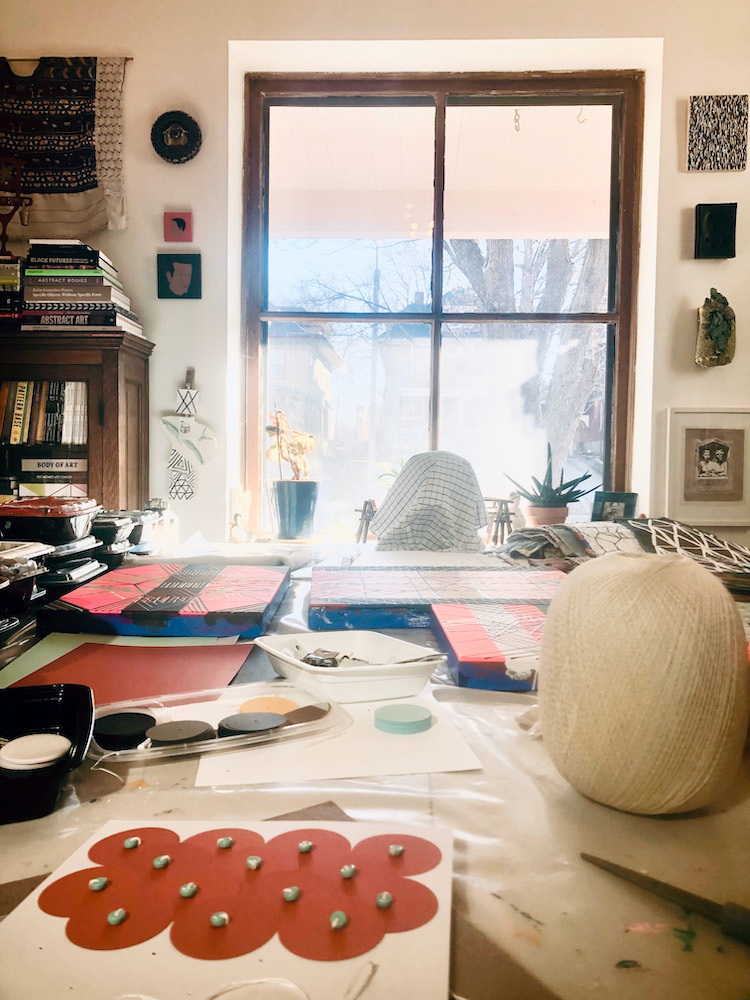
How did you source the clothes for your Remnants series? Were they found, gifted or from your own closet? Were there any sentimental connections to these particular clothing items?
The clothes I work with are typically menswear that have been acquired for myriad reasons, whether it was something that had been outgrown, worn through, handed down, or left behind after someone passed away. I began with my own clothes, but I have also been gifted garments and other items from family, friends, collectors, fellow artists, and others. Two of the shirts sourced for the works in this exhibition came from my own closet, while a third came from a friend who gifted me her father’s shirts after he passed away.

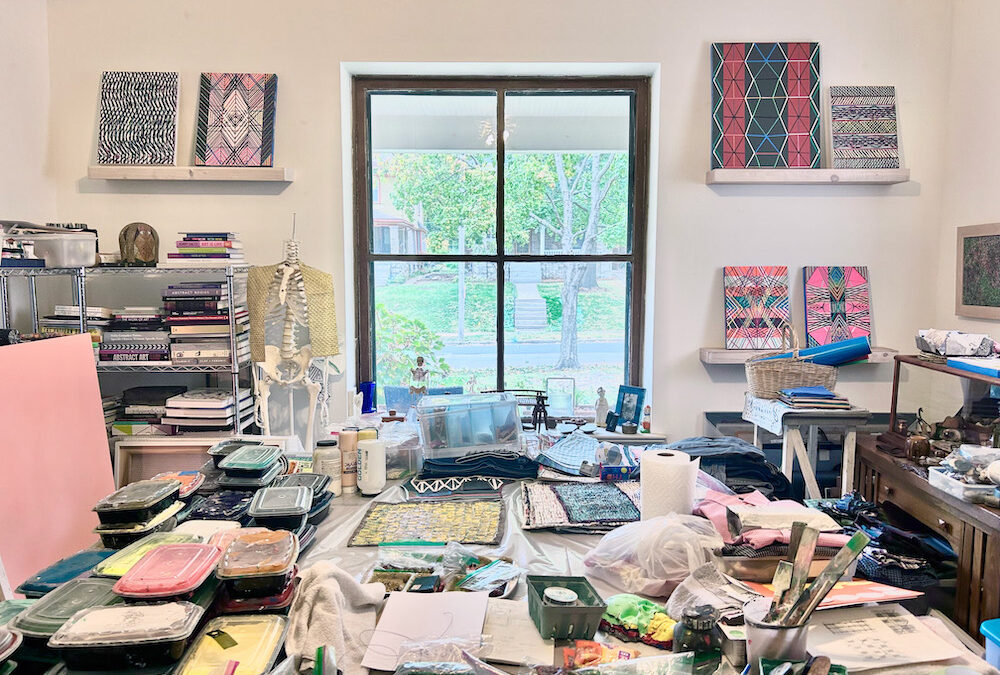
Recent Comments